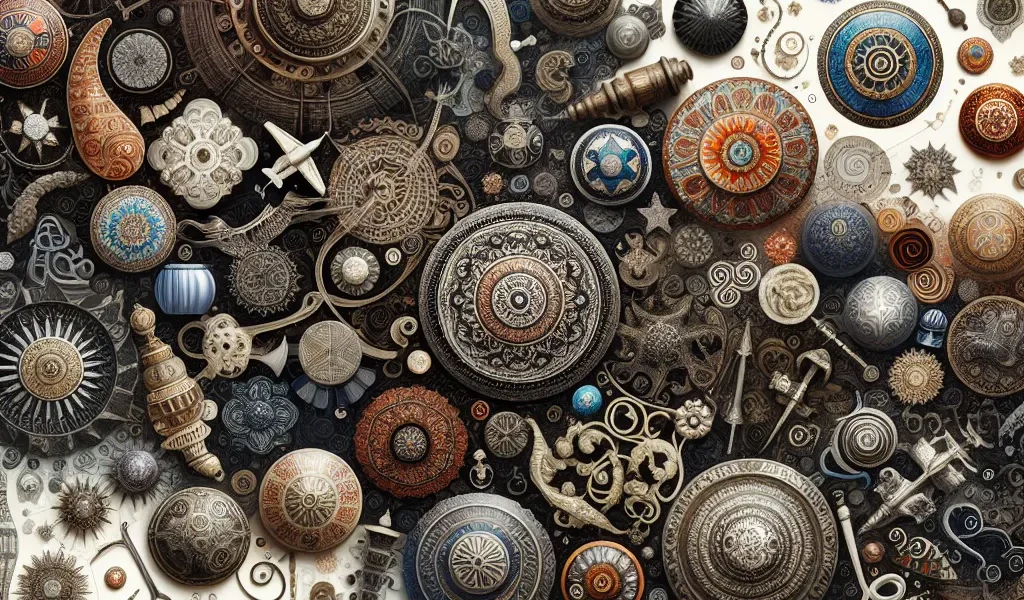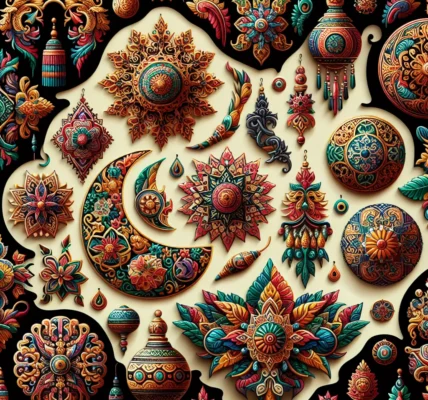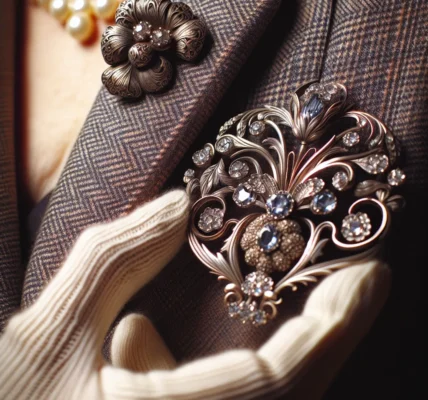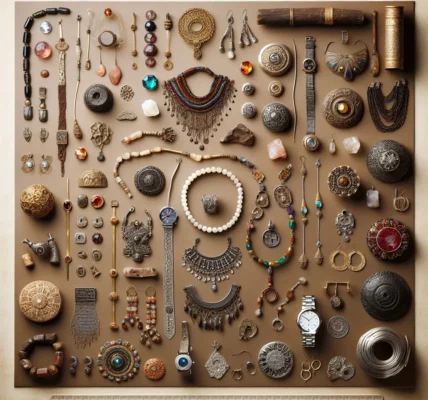The Evolution of Ornaments Through Time
Ornaments have a rich history that dates back to ancient civilizations, where they were used for various purposes, including religious, cultural, and decorative significance. The evolution of ornaments through time reflects the ever-changing societal norms, artistic influences, and technological advancements. In ancient times, ornaments were crafted from natural materials such as shells, bones, and feathers, and were adorned for symbolic and ceremonial purposes.
As civilizations progressed, the techniques for creating ornaments advanced, leading to the use of precious metals, gemstones, and intricate designs. The Ancient Egyptians, for example, were known for their exquisite jewelry and ornamental pieces, often incorporating motifs of deities and symbols of protection. Similarly, the Greeks and Romans utilized ornate designs in their jewelry, with the use of motifs inspired by nature and mythology.
During the Middle Ages, the significance of ornaments expanded to include heraldic symbols and religious iconography, reflecting the feudal system and the influence of the church on society. Intricately carved ornaments in the form of brooches, pendants, and crowns became emblematic of social status and religious devotion.
The Renaissance period marked a resurgence of interest in ancient art and culture, inspiring ornamental designs that incorporated classical motifs and a focus on symmetry and proportion. The Baroque and Rococo periods saw a departure from the restrained designs of the Renaissance, with a preference for elaborate and extravagant ornaments that reflected the opulence of the time.
In the modern era, the industrial revolution brought about new methods of production, allowing ornaments to be mass-produced and more accessible to a wider population. This led to a diversification of styles and materials used in ornaments, catering to different tastes and fashion trends.
Today, ornaments continue to hold significance, serving as expressions of individual style, cultural heritage, and symbolic representations. The evolution of ornaments through time not only reflects the artistic and societal influences of each era but also serves as a testament to human creativity and the enduring appeal of decorative adornments.
Cultural Significance of Ornaments Around the World
Ornaments have played a significant role in the cultural expression of various civilizations and societies around the world. From ancient times to the modern era, ornaments have been used to symbolize status, wealth, spirituality, and cultural identity. Their diversity and significance reflect the rich tapestry of human history and creativity.
In many cultures, ornaments hold deep cultural and spiritual significance. For example, in South Asian countries like India, intricate and ornate jewelry such as mangalsutras, maang tikkas, and nose rings are not just decorative items but also carry symbolic meanings related to marriage, femininity, and prosperity. Similarly, in African societies, beadwork and body ornaments are used to convey messages, express identity, and mark important life events such as coming of age or marriage.
Furthermore, ornaments often reflect the values and beliefs of a particular culture. For instance, in ancient Egypt, the use of amulets and talismans as ornaments was intertwined with religious and spiritual beliefs, serving as protections in the afterlife. In contrast, the intricate filigree work of Celtic ornaments represents a connection to nature and the interwoven nature of life.
Through the ages, ornaments have also served as a form of cultural exchange and trade, spreading ideas, techniques, and aesthetics across nations and continents. The Silk Road, for example, facilitated the exchange of ornaments and jewelry, leading to a fusion of styles and designs across Asia and Europe.
Understanding the cultural significance of ornaments provides valuable insights into the beliefs, traditions, and values of different societies. Moreover, it highlights the universal human impulse to adorn oneself and surroundings, making ornaments a timeless and integral aspect of cultural expression worldwide.
The Art of Ornament-Making: Techniques and Traditions
The art of ornament-making has a rich history that spans across cultures and civilizations, reflecting the unique techniques and traditions of each society. This intricate craft has been practiced for centuries, with artisans utilizing various materials such as wood, metal, glass, and ceramics to create stunning ornaments. Techniques such as carving, molding, engraving, and painting have been employed to embellish ornaments with exquisite designs and patterns, showcasing the skill and creativity of the craftsmen.
Throughout history, ornament-making has held significant cultural and religious importance. In many cultures, ornaments were crafted for religious ceremonies, festivals, and rituals, serving as symbols of spiritual beliefs and traditions. The intricate designs and symbols incorporated into these ornaments often conveyed meaningful stories and mythological narratives, adding a layer of symbolic depth to the art form.
Furthermore, ornament-making techniques have been passed down through generations, contributing to the preservation of traditional craftsmanship. Artisans have upheld age-old methods and styles, ensuring that the cultural heritage and artistic integrity of ornament-making are perpetuated. Today, contemporary artists and artisans continue to draw inspiration from these time-honored techniques while infusing their work with modern creativity and innovation.
In the modern context, ornament-making remains an integral part of artistic expression and cultural identity. It continues to enrich the visual landscape, whether through ornate architectural details, intricately designed jewelry, or decorative art objects. The art of ornament-making persists as a testament to human creativity, craftsmanship, and the enduring significance of traditions passed down through centuries.
Ornamentation in Modern Society: Trends and Influences
Ornamentation, once a hallmark of traditional craftsmanship and cultural symbolism, has evolved alongside the changing trends and influences of modern society. In contemporary times, the significance of ornaments transcends their decorative function, as they are often laden with personal, social, and artistic significance.
The modern approach to ornamentation embraces a fusion of traditional and contemporary designs, reflecting a globalized world where cultural boundaries are blurred, and creativity knows no limits. This shift has seen a resurgence of interest in traditional ornamentation techniques, reinterpreted through the lens of modern aesthetics. As a result, we witness a delightful juxtaposition of ancient motifs and futuristic designs, culminating in eclectic ornamentation that resonates with diverse audiences.
Furthermore, the advent of digital technology has revolutionized the world of ornamentation, offering new avenues for creativity and expression. From 3D-printed jewelry to digitally rendered patterns, technology has facilitated the exploration of avant-garde ornamentation, pushing the boundaries of what is achievable in design and craftsmanship. This marriage of tradition and innovation has not only expanded the scope of ornamentation but has also made it more accessible and customizable, enabling individuals to adorn themselves with unique pieces that reflect their personal taste and style.
In conclusion, as we navigate the complexities of modern society, ornamentation continues to be a powerful form of self-expression, cultural preservation, and artistic innovation. Its dynamic evolution and adaptability make it a timeless and integral aspect of contemporary lifestyles, enriching our surroundings with beauty, meaning, and individuality.




